27 expert tips for perfect pasta every time
Simple steps to perfect pasta

Anna Strigana Fedotova/Shutterstock
Pasta is incredibly versatile and easy to cook – making it a go-to staple for quick dinners, fussy kids and busy households. But what if you want to pull out all the stops and take your pasta prowess to the next level? To save you time, effort and money, we've rounded up some common myths and hacks that don't actually work. Read on to learn how to cook pasta like a pro.
Choose the right pasta shape

kuvona/Shutterstock
Contrary to what many might think, there's a science behind which pasta shapes and sauces pair together best – you'll rarely see an Italian serving a thick sauce paired with thin ribbons (shells or tubes capture the sauce better). The general rule of thumb is to match chunkier sauces with larger, more robust shapes, and to team creamier sauces with thinner, longer shapes.
Expensive pasta is really worth it

Vladeep/Shutterstock
You might think that some dried pastas are more expensive simply because of their sleek packaging and brand names, but the drying process really does make a difference when it comes to flavour and texture. Cheap pasta is dried quicker to produce more, thus trapping underdeveloped starch proteins inside – leading to inferior texture and flavour.
Bronze die (cut) also makes a difference
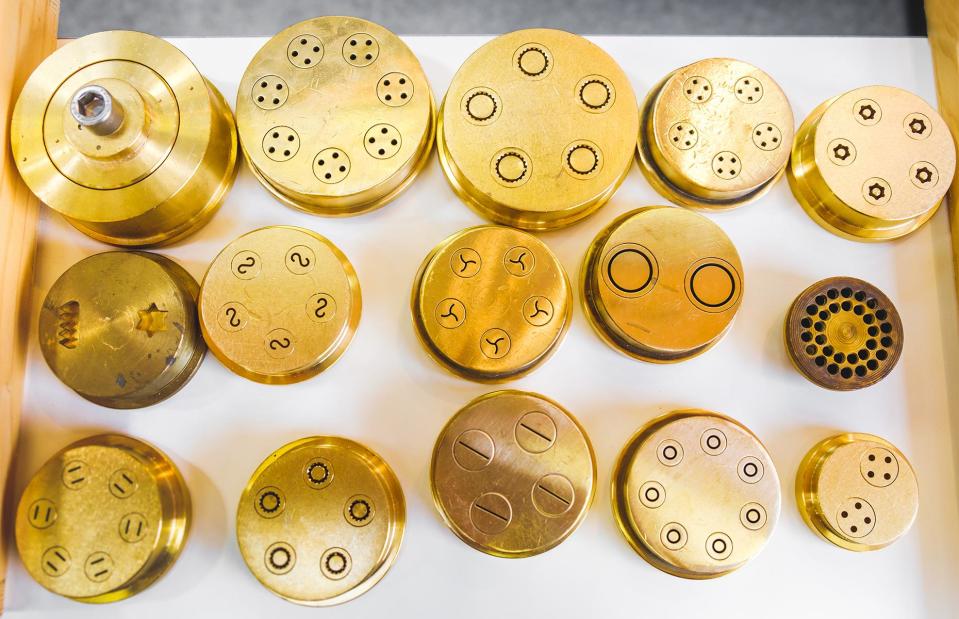
Luca Lorenzelli/Shutterstock
Here, the word 'die' refers to a kind of bronze mould. Most manufacturers use Teflon moulds to make different pasta varieties, resulting in smooth and shiny shapes. However, bronze die-cutting pasta is more traditional, and leads to perfectly coarse, porous shapes – which is excellent news if you want your sauce to cling on to your pasta.
Eggs, or no eggs?
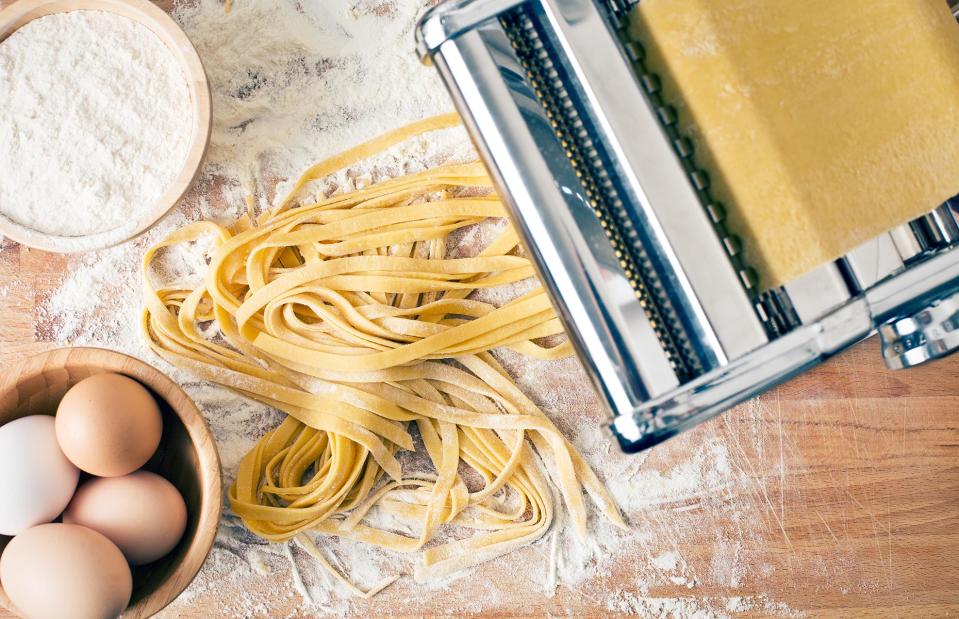
iri Hera/Shutterstock
You've probably seen TV chefs incorporating flour into golden egg yolks to make fabulous-looking pasta – but the truth is, not all pasta doughs require eggs. Traditional egg pasta is perfect for recipes where you need to shape and manipulate the dough, such as ravioli and tortellini. It's also good for long shapes, like pappardellle, due to its durability. Pasta bianca is made without eggs, and is good for both small shapes (orecchiette, for example), and dumpling-like shapes, like strozzapreti.
The power of flour
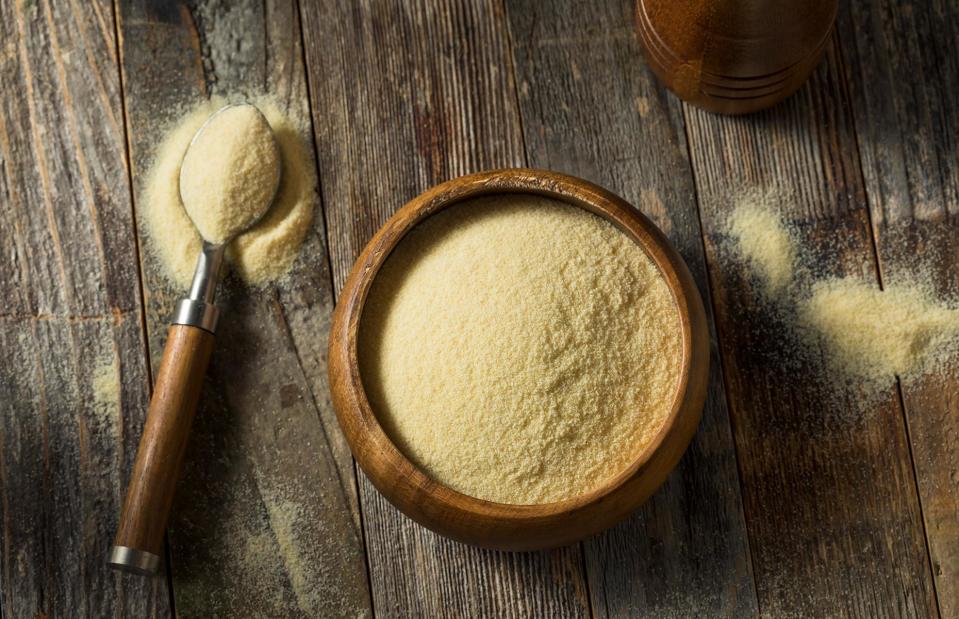
Brent Hofacker/Shutterstock
We've all heard of '00' flour, and know it's the top choice for making fresh pasta – but did you know that this is only the case if you're making egg pasta? For pasta bianca, use semola, or Italian semolina flour. You should never use self-raising flour, as the added baking powder will have an undesired effect on your pasta's texture.
Try pre-soaking...

Candice Bell/Shutterstock
You might wonder: pasta cooks quickly anyway, so why soak it? The answer is simple – pasta can be rehydrated at any temperature (although you should avoid soaking it in cold water). Soaking it for a few hours, or even overnight, at room temperature can eliminate the need for boiling it altogether, saving you money on your energy bills. Just like the fresh pasta you can buy from supermarkets, once the pasta has been soaked, it will only need a couple of minutes' cooking time; just add it to your (hot) sauce on the hob.
…but DON'T pre-soak lasagne sheets
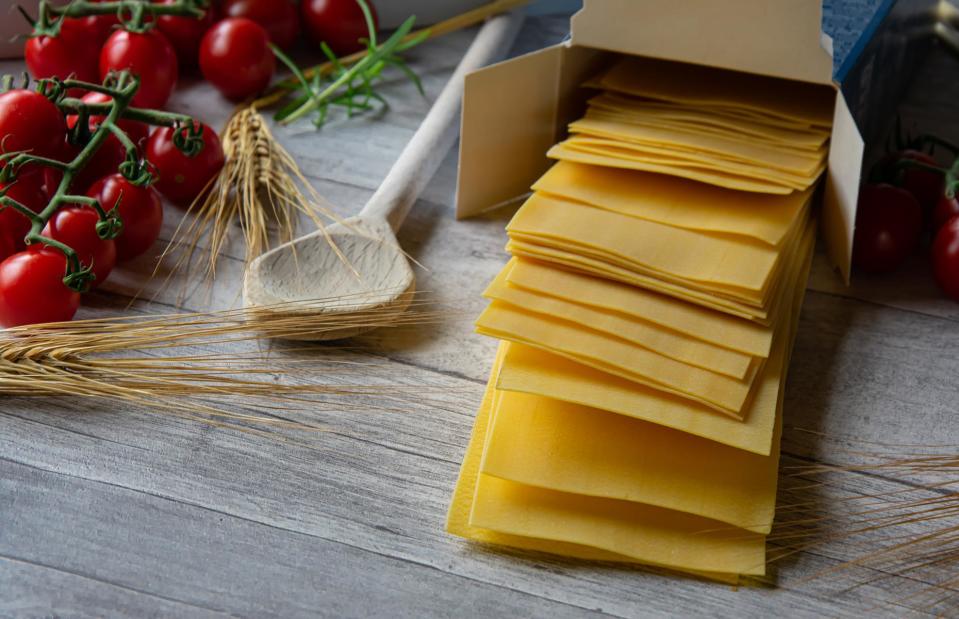
Angelika Heine/Shutterstock
Lasagne takes a while to cook in the oven, and the sauces around the sheets reach boiling temperature pretty quickly. If you pre-boil your lasagne sheets, they'll be overcooked by the time your lasagne comes out of the oven. When assembling, just be sure to cover all of the corners with sauce so the sheets are completely submerged.
Only add pasta to boiling water
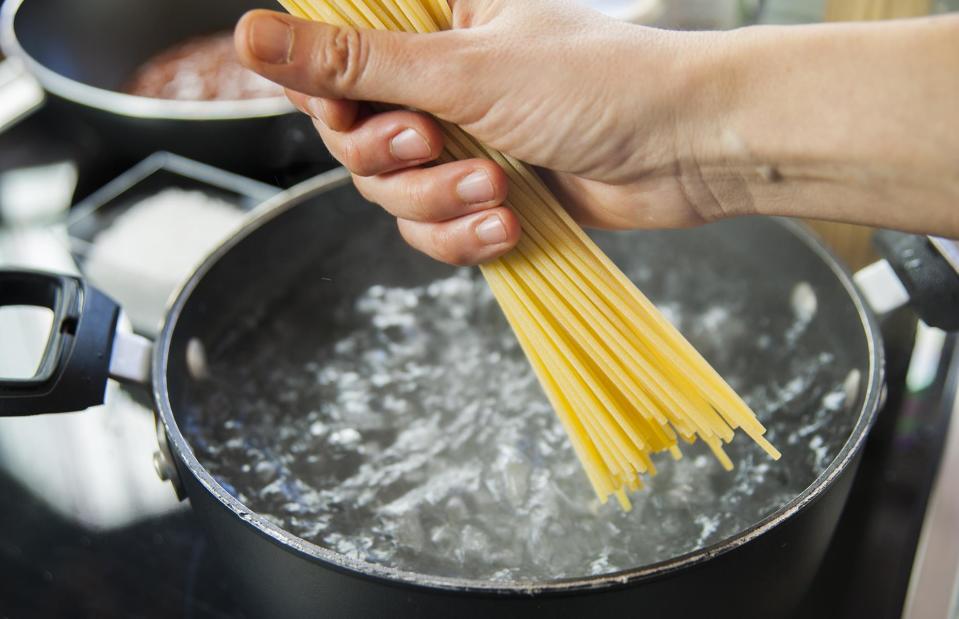
dibettadifino/Shutterstock
Heat is what releases the starch in pasta – so as soon as it hits even warm water, the starch will start to develop, and the pasta will stick and clump together. To ensure your pasta cooks properly, wait for the water to boil, and cook it for the time indicated on the packet.
Do add salt to the water…

Krasula/Shutterstock
…but not to make it boil faster (that's an old wives' tale). The reason you need to salt the water is because it flavours both the pasta and the sauce. Even if you're not adding any saved pasta water to your sauce, there will be water clinging to the pasta when you add it in – and if your pasta is unseasoned, it will dilute the flavour you've worked so hard to build. Top tip: wait until the water is boiling before you add your salt, so it dissolves instantly. Otherwise, it'll just sink to the bottom and cause pitting (a form of rusting in stainless steel).
However, flavouring your water is pointless

Sokor Space/Shutterstock
Some cooks suggest adding aromatics to the pasta water, like bay leaves, peppercorns or even bouquet garni (a bundle of herbs commonly used in France to flavour soups, stocks and casseroles) – but there's no point putting all that effort into water that you'll end up discarding most of anyway. Focus your attention on building the flavours in the sauce itself, and use the salted pasta water as a way to enhance them.
Do not add oil to your pasta water
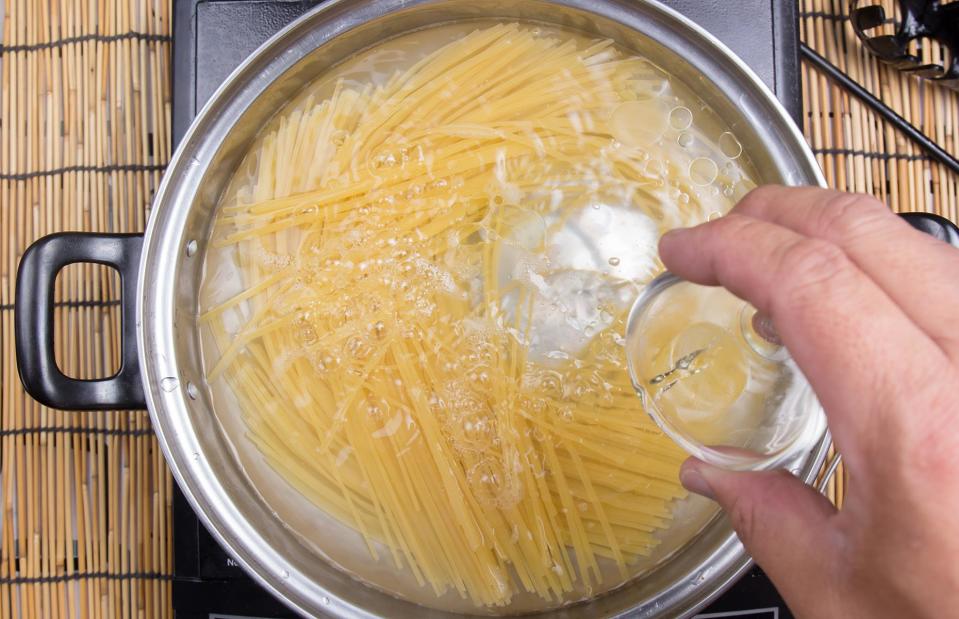
kungverylucky/Shutterstock
It's a myth that oily water stops pasta sticking together. If you add oil to your pasta water, it'll coat each pasta shape with a greasy layer that will prevent the sauce from sticking to it – in fact, it will just slide right off. Instead of wasting oil, simply stir your pasta a couple of times while it's boiling.
Use a pot that's large enough
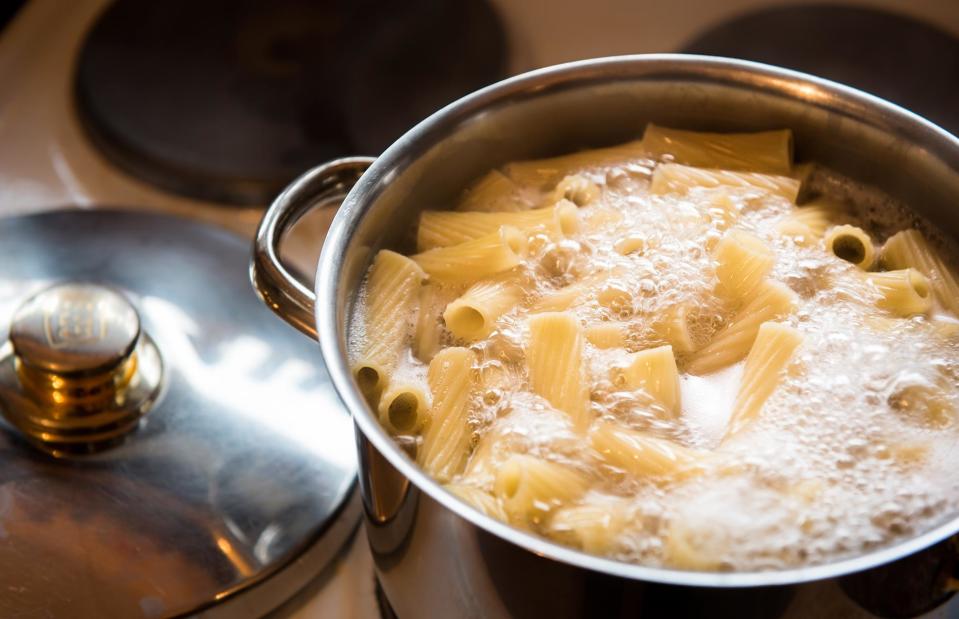
Ivana P. Nikolic/Shutterstock
Another sure-fire way to make sure your pasta clumps together and cooks unevenly is boiling it in a small pot. Make sure there's enough water and space for the pasta to float around freely. The gold standard is 1L (33fl oz) of water for 100g (3.5oz) of pasta.
Forget about rinsing your pasta
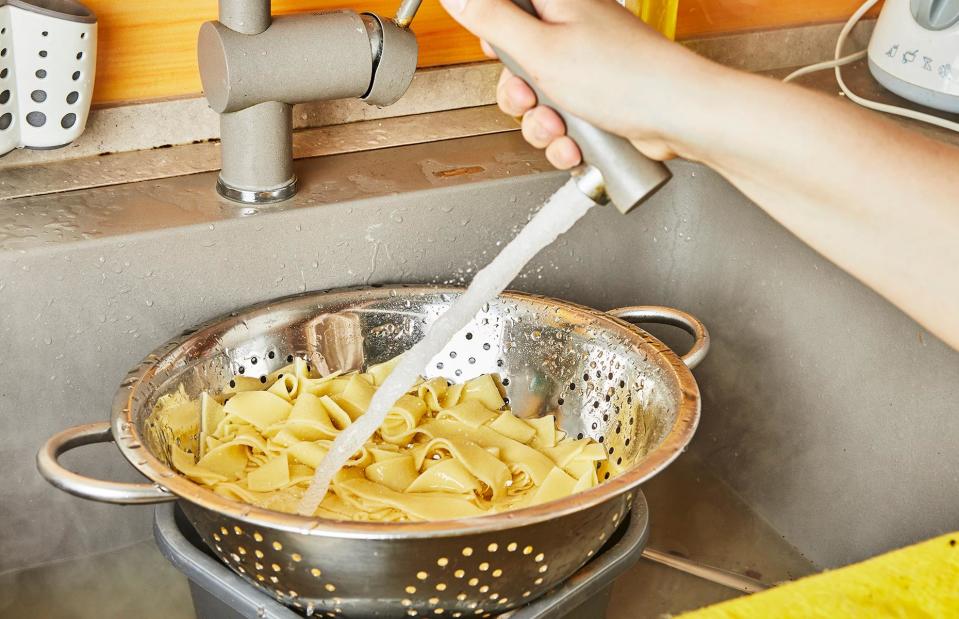
AlexDonin/Shutterstock
After draining your pasta, rinsing it with cold water to stop it from cooking further (and sticking together) is almost always a bad idea. You'll simply end up washing away the starch that's essential for a silky smooth sauce. The only time you should rinse your pasta is if you're cooking it to add to a pasta salad. Similarly, don't let your pasta sit drained in the colander for too long – it will clump together and overcook in the middle.
Add pasta to the sauce, not the other way around
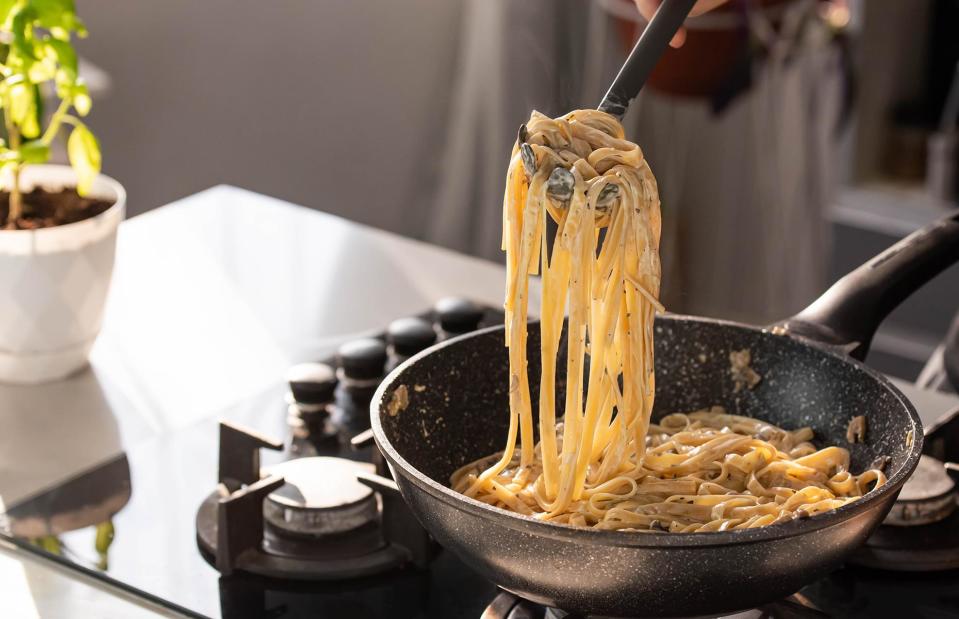
Anna Strigana Fedotova/Shutterstock
If you're serious about perfecting your pasta, you should always undercook your pasta by a minute or so, then finish it off in the sauce to give the dish a superior flavour. You'd be surprised how much flavour you lose by serving cooked pasta with the sauce simply poured over it.
Al dente pasta is perfectly cooked

Sokor Space/Shutterstock
The cooking instructions on pasta packets are for perfectly al dente pasta. Each pasta shape or strand should be perfectly soft throughout, without any crunch, but still firm and holding its shape. It's important to cook pasta al dente to avoid the gluten overdeveloping and the pasta going mushy and too soft.
Don't break spaghetti
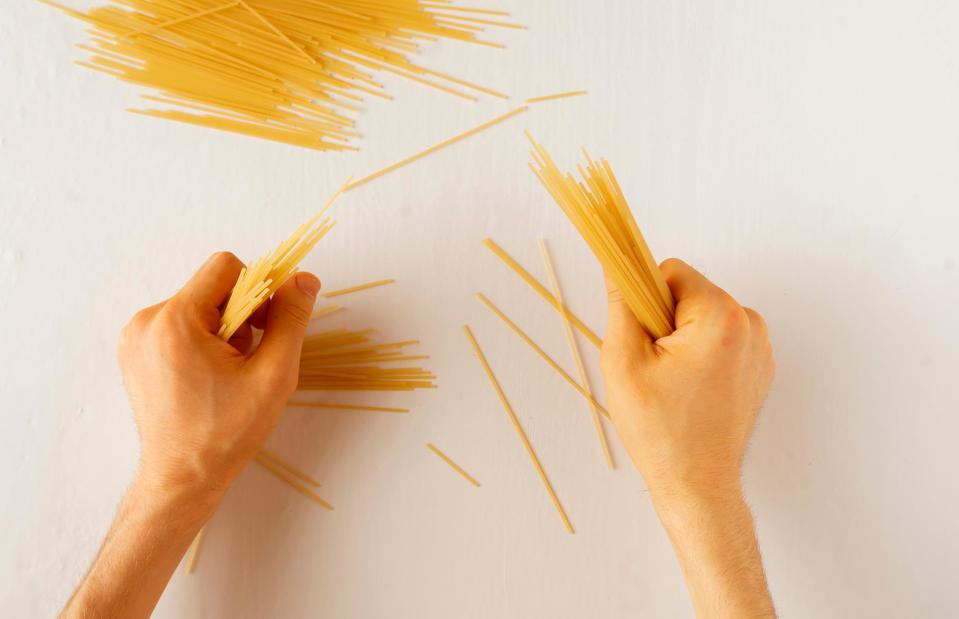
Mike_shots/Shutterstock
Many suggest that breaking spaghetti in half means it will cook more evenly. However, if you break up the strands, it makes them much harder to eat. Add spaghetti to a pot of boiling water and stir for the first minute, slowly twirling the strands as they soften; then, they can be completely submerged.
Sorry, there is no cream in carbonara
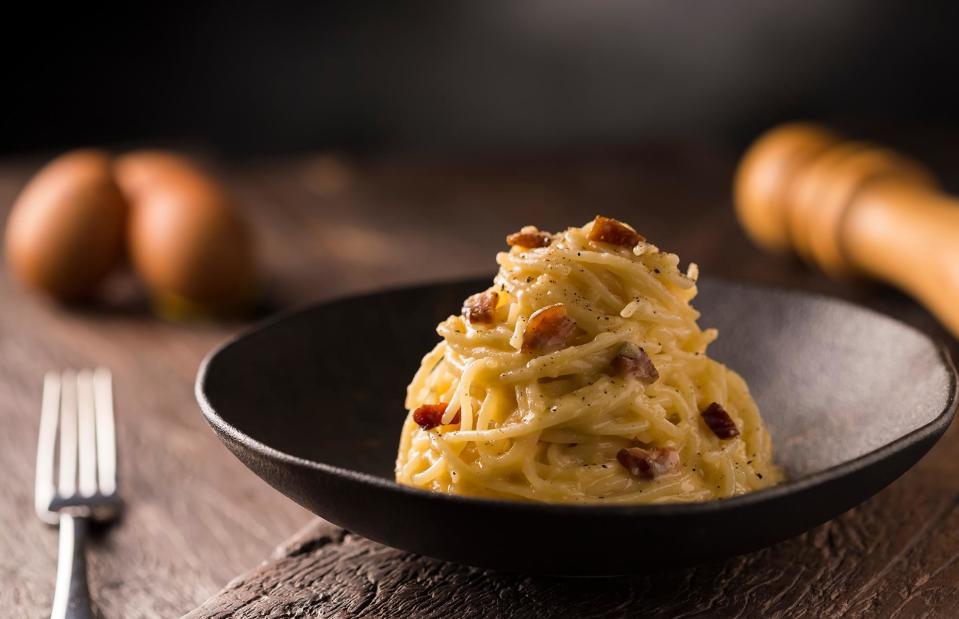
Brent Hofacker/Shutterstock
For a superb flavour and luscious sauce, stop making your carbonara with cream. If you're struggling with scrambling your eggs when making a real carbonara, try this: in a bowl off the heat, combine finely grated pecorino and Parmesan, then add coarsely ground toasted black peppercorns, a whole egg and three egg yolks. Whisk together, then slowly add some of the starchy pasta water and incorporate until you have a thick, smooth sauce. Combine with spaghetti and some pasta water, and finish in the pan for 30 seconds on a low heat.
Go low and slow…
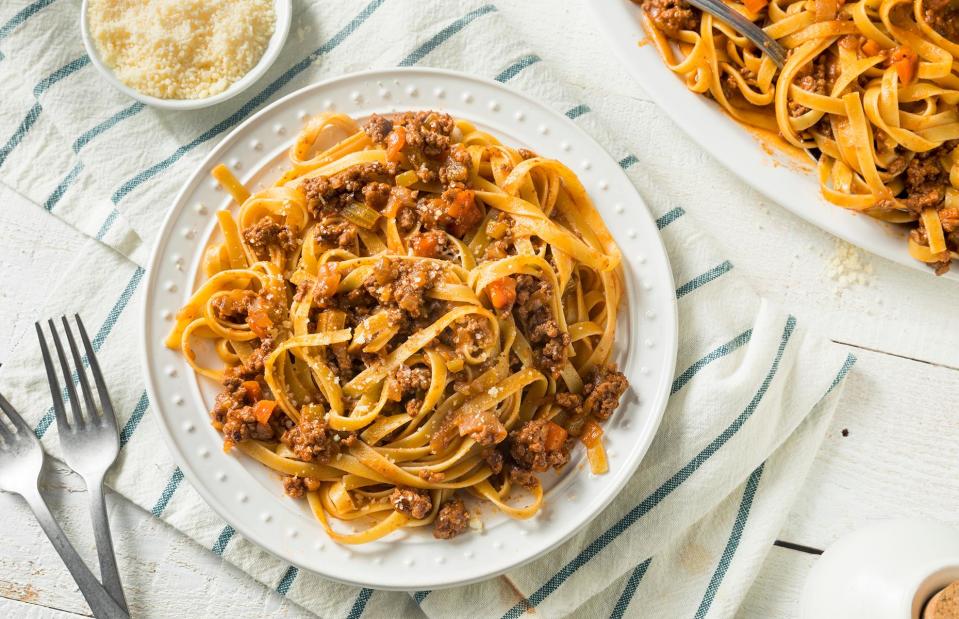
Brent Hofacker/Shutterstock
Many tomato-based sauces take time for the harsh, acidic flavours to mellow – so don't think you can make a good bolognese in half an hour. These sauces take time and effort, and are best cooked low and slow. However, they freeze and reheat really well, so take the time to cook one big batch and freeze it in portions.
…but don't be afraid to keep it simple
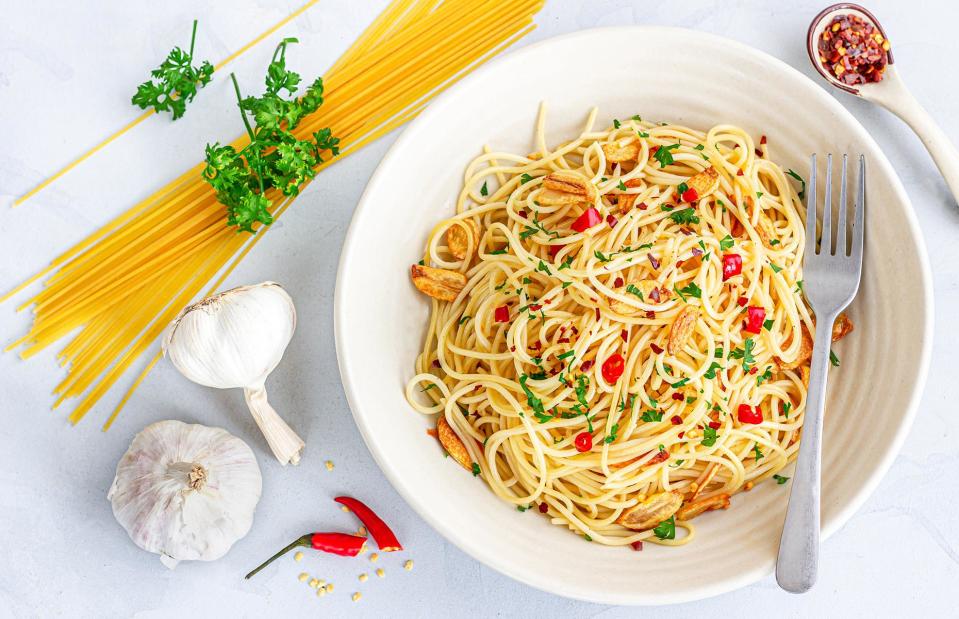
Brent Hofacker/Shutterstock
Similarly, there are combinations that take no time at all. A simple prawn, garlic and chilli pasta won't take more than 10 minutes to rustle up. The same goes for classic cacio e pepe, or famously flavoursome and thrifty pasta puttanesca.
Use lasagne sheets for cannelloni

Elena Shashkina/Shutterstock
You might find that pre-made cannelloni tubes are quite messy and hard to fill. This is where pre-cooked lasagne sheets come in quite handy; par-boil them until they're just soft enough to mould, place your filling at one end, then roll them up and place them in a baking dish seam-side down. Easy!
Dress your pasta salad while it's still warm

Igor Dutina/Shutterstock
It might seem more intuitive to let pasta cool down a little before assembling your salad and mixing it with sauce, especially if it's a creamy sauce. However, if you add your dressing while the pasta is still warm, it'll absorb the flavours better (and taste much less like a ready-made supermarket lunch deal).
No, you really shouldn't throw pasta at the wall
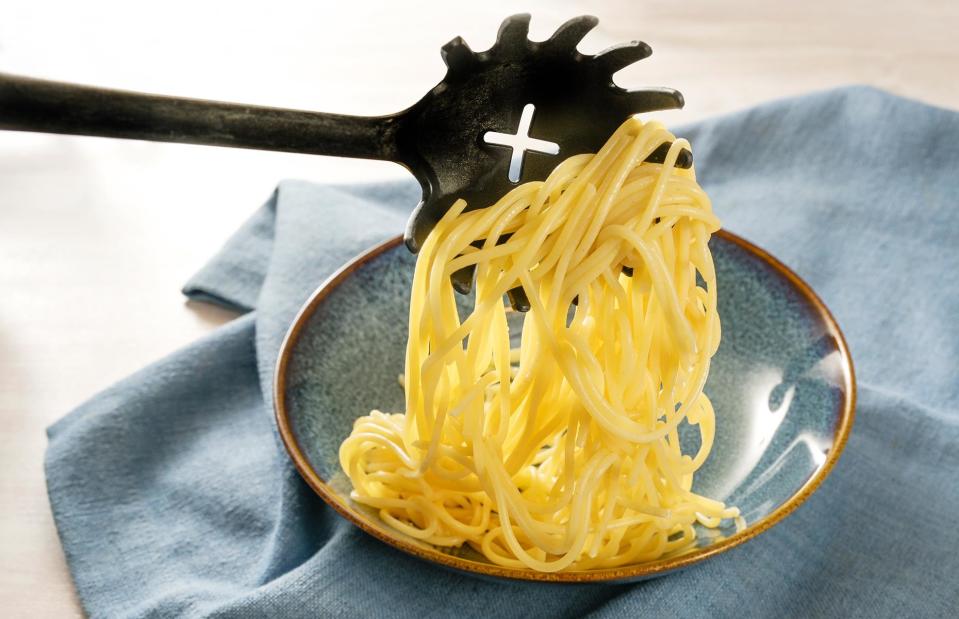
Maren Winter/Shutterstock
We've all heard the old myth about throwing pasta against the wall and seeing if it sticks – meaning it's ready. We have our doubts as to whether anyone has ever actually tried it, but it's a sure-fire way to make a mess in your kitchen and waste food for no reason!
You don't always have to add cheese
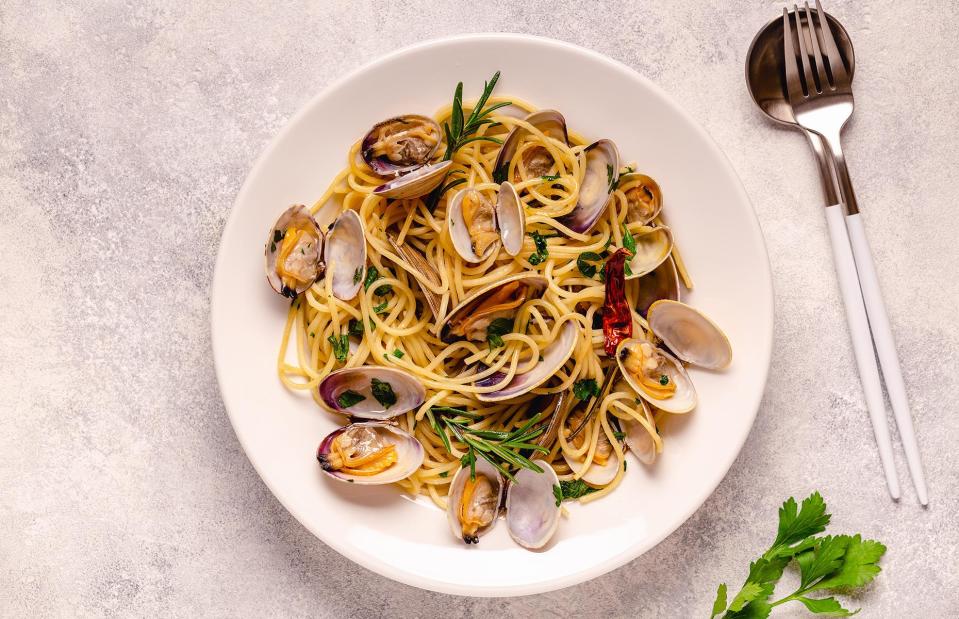
Tatiana Bralnina/Shutterstock
Yes, we know, we all love cheese. However, there are some sauces that not only don't need cheese, but taste better without it. For example, cheese shouldn't be grated over any pasta dish containing seafood or fish. Similarly, any hot pasta dishes with chilli and garlic should also skip the cheese.
DON'T use a spoon to twirl long pasta

aaleenaf/Shutterstock
In Italy, you'll only ever be given a spoon to eat your pasta if you've ordered tortellini in broth. Otherwise, best practice is to simply twirl your pasta strands with your fork. Yes, this can be messy, and it takes a bit of practice to master the skill, but making a bit of a mess is still better than cutting pasta with a knife – which is something you should never do.
There is an art to reheating pasta

Vinicius Bacarin/Shutterstock
For the best results, reheat your leftover pasta in a pan on a low heat (or if it's a pasta bake, warm it in the oven). However, if your only option is a microwave, add a tablespoon or two of water to the dish to prevent the sauce from drying out and the pasta going tough.
Use leftover pasta in creative ways
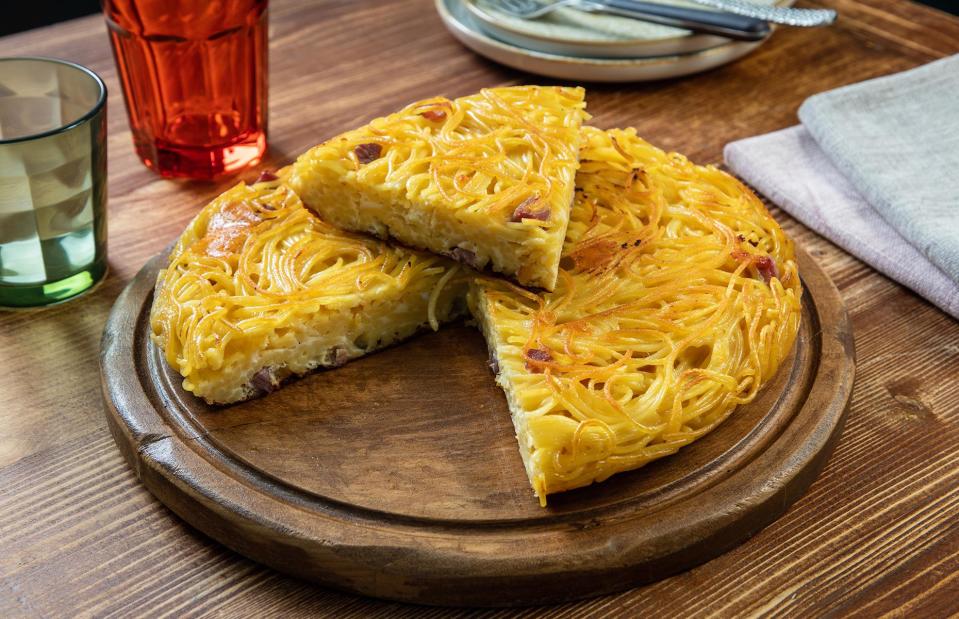
denio109/Shutterstock
Have leftover pasta but no sauce to eat it with? No problem! Do like the Italians do and turn it into a frittata di pasta. Mix the cooked pasta with a little sauce, or even a knob of butter, plus eggs and some grated Parmesan – then cook it like you'd cook an omelette. You can add frozen peas, tomatoes, chopped sausage or olives for more flavour.
You really can make pasta chips

Brent Hofacker/Shutterstock
A TikTok recipe that's taken off, air fryer pasta chips might sound like a gimmick, but they are, in fact, a delicious snack. Dense pasta shapes like farfalle work best here. To make pasta chips, cook the pasta according to the instructions, then transfer it to a bowl. You can season it with oil, salt and pepper, or go sweet with cinnamon sugar. Set your air fryer to high, and cook for around 15 minutes, shaking every five, until your chips are crispy and golden.


